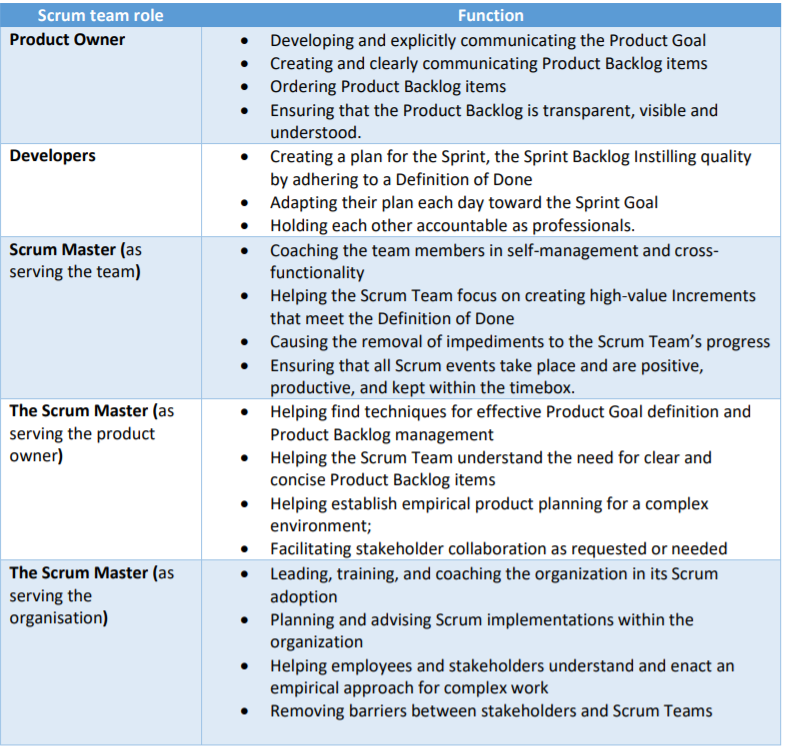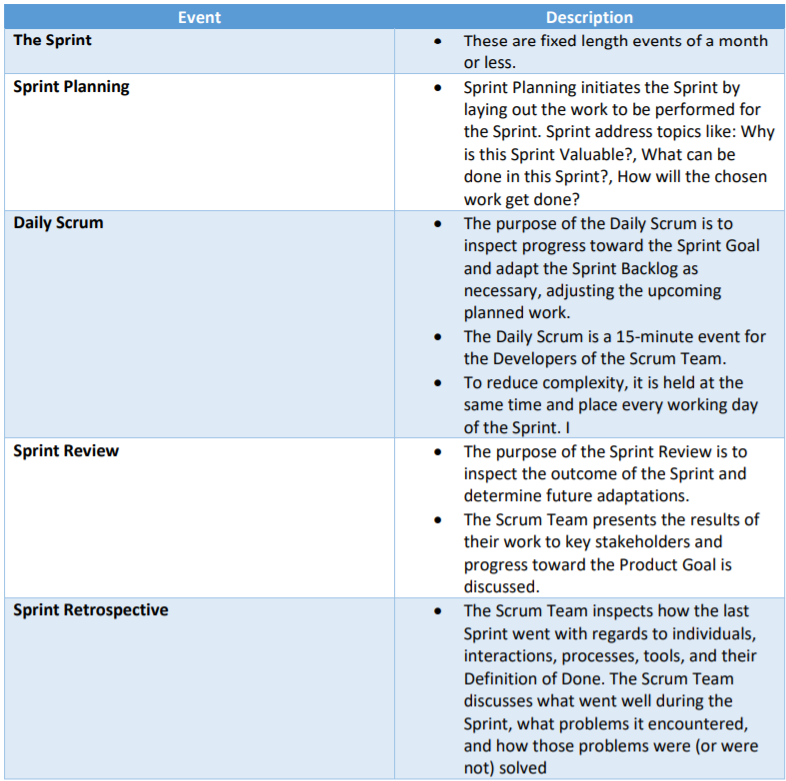
If you want to get anything reasonably complex done Scrum is the way to go. Scrum is a neat way to combine process and team structure into a machine that can get things done. One of my favourite documents is the Scrum Guide (The Guide). The last guide was only 14 pages and it explained everything you need to know about Scrum - no frivolous words, or page filling and being short and sweet. This chapter is woefully inadequate attempt to reflect that work.
The Guide starts with a short summary that goes like this: Scrum requires a Scrum Master that fosters an environment where:
- A Product Owner orders the work for a complex product in a Product Backlog.
- The Scrum Team turns a selection of the work into an Increment of value during a Sprint.
- The Scrum Team and its stakeholders inspect the results and adjust for the next Sprint.
- Repeat
Scrum is different to other methodologies. Many system or product development methodologies assumes the process is well understood and that it can be planned in detail and then successfully completed on time and budget. Practice doesn’t really support this. Just ask yourself: “How many of reasonably complex projects have been on time and on-budget?”. If your answer is not many, the time is probably right to look at the different ways of doing things.
Scrum assumes that the development process is unpredictable and complicated and that it can only be described very loosely as an overall progression. Scrum supports progressive elaboration – basically we learn and adapt as we progress.
The Scrum team
The magic behind Scrum is a small team consisting of one Product Owner, one Scrum Master and developers. There are no hierarchies and no sub teams. The careful reader will notice that this minimised corporate BS, silos and handoffs.
The teams are self-managed, which means team themselves decided who does what, when and how. It is also cross functional in the sense that all skills necessary to create value is in the team.

Scrum Events
Events within a Scrum are time-boxed and prescribed. They are used to minimise unnecessary meetings and create regularity. The time-constraints ensure that no time is wasted, thus, optimising efficiency. The events allocate time to inspect the functioning of the team, ensuring transparency and optimising productivity and efficiency.

Scrum Artifacts
Scrum’s artifacts represent work or value. Scrum defines three artifacts: product backlog, sprint backlog, and a potentially releasable product increment.

So what now?
It is worth giving Scrum a go. Anecdotal and academic feedback agree that the return on investment for implementing Scrum is high. There is evidence that suggests that many companies have doubled the rate of software production on the average for all teams measured.
There is a notion that Scrum or Agile is slap-dash development. Nothing can be further from the truth. Some CMMI Level 5 companies cut the costs of software projects in half and reduced measured defects by 40% while still maintaining CMMI Level 5 compliance for all projects [19]. Even the best companies will radically improve performance by introducing Scrum and some will achieve far more than 1000% rate of return on investment in Scrum training.
Further reading
Schwaber, Ken, and Jeff Sutherland. The Scrum Guide, 2021.
Back to the Table of Contents of our Techno Fluency book